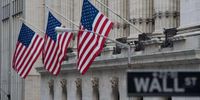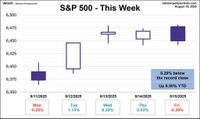After a string of record-breaking sessions, U.S. stocks took a breather on Friday, August 15, 2025, as investors digested a flurry of economic data, corporate news, and shifting expectations for Federal Reserve policy. The S&P 500 slipped 0.3% to close at 6,449.79, ending a streak of record highs earlier in the week, while the tech-heavy Nasdaq Composite fell 0.4% to 21,622.98. The Dow Jones Industrial Average, however, managed to eke out a gain, rising 34.86 points, or 0.08%, to 44,946.12, buoyed by a notable surge in UnitedHealth shares.
This mixed performance capped a week that saw all three major indexes post solid gains. The Dow outperformed, climbing 1.7% for the week, while the S&P 500 and Nasdaq each added nearly 1%. As reported by Investopedia and Investing.com, the rally was fueled by optimism over potential Federal Reserve rate cuts and a strong batch of corporate earnings, but Friday’s session revealed some cracks beneath the surface.
One of the day’s biggest stories was the sharp decline in semiconductor stocks, which weighed heavily on the broader market. Applied Materials led the sector lower, tumbling 14% after issuing a disappointing outlook for the current quarter, citing macroeconomic uncertainty and weaker demand in China. KLA Corp. and Lam Research followed suit, falling 8% and 7%, respectively. Even industry giants Nvidia and Broadcom weren’t spared, losing 0.9% and 1.6%. The PHLX Semiconductor Index dropped more than 2% as concerns mounted over potential new tariffs on imported chips.
In a twist, Intel managed to buck the downward trend, with its shares climbing nearly 3% after reports surfaced that the Trump administration is considering taking a stake in the chipmaker. According to Investopedia, discussions have included tapping into the Chips Act to partially fund the investment, following a meeting between Intel CEO Lip-Bu Tan and President Trump earlier in the week. Trump, speaking to reporters aboard Air Force One, hinted at hefty tariffs on chips and semiconductors, saying, "I'm going to have a rate that is going to be 200%, 300%." The White House characterized these discussions as "speculation unless officially announced by the Administration." Bernstein analysts noted that government support could help Intel fund new chip manufacturing technology, though what the administration might seek in return remains unclear.
Meanwhile, UnitedHealth Group stole the spotlight among blue chips. Shares of the health insurance giant soared as much as 14% after Warren Buffett’s Berkshire Hathaway disclosed a new $1.6 billion investment in the company. Despite being battered earlier in the year by regulatory investigations and higher care costs, UnitedHealth’s stock rallied sharply on the news, making it the S&P 500’s top performer for the day. Other health insurers, including Centene, Molina Healthcare, and Elevance Health, also saw their shares rise. As Investopedia highlighted, Berkshire’s regulatory filings revealed that it had been quietly accumulating UnitedHealth shares since late last year, seeking to avoid a price spike.
Elsewhere, the week’s economic data painted a complex picture. The University of Michigan’s consumer sentiment index fell to 58.6 in August from 61.7 in July, missing analyst expectations and reflecting growing worries over inflation and tariffs. Inflation expectations for both the one- and five-year horizons jumped, reaching 4.9% and 3.9%, respectively, up from 4.5% and 3.4%. According to Investing.com, these numbers weighed on hopes for aggressive Fed easing. The odds of a September rate cut, while still high, slipped to 86% from 92% the previous day, based on Fed Rate Monitor Tools. Investors are now looking ahead to Federal Reserve Chair Jerome Powell’s highly anticipated speech at the Jackson Hole Symposium next Friday, hoping for clearer signals on the path of monetary policy.
Despite the dip in sentiment, July’s retail sales data provided a dose of reassurance about the health of the U.S. consumer. Retail sales rose 0.5% in July, matching consensus expectations, with sales excluding automobiles up 0.3%. Analysts at Capital Economics noted, "The 0.5% m/m rise in retail sales in July, paired with the upward revision to May’s and June’s data, shows households continue to spend in healthy amounts despite the threat of tariffs." Still, some caution that a softening labor market and higher goods prices could curb consumer spending in the months ahead.
Other market indicators reflected the day’s uncertainty. Yields on the 10-year Treasury note rose to 4.32% from 4.29%, as prices fell. Oil prices dipped 1.3% to $63.12 per barrel, trading at their lowest level since early June, while gold prices edged down to $3,382.60 an ounce. The U.S. dollar index fell 0.4% to 97.85, its lowest in three weeks, and Bitcoin retreated from recent highs, trading at $117,300 by late afternoon.
On the corporate front, Berkshire Hathaway’s latest regulatory filing showed a flurry of portfolio moves beyond UnitedHealth. The conglomerate trimmed long-held stakes in Apple and Bank of America, exited its position in T-Mobile, and added new bets on homebuilders D.R. Horton and Lennar. Berkshire’s portfolio has seen notable shifts since Buffett announced his upcoming retirement as CEO at the end of 2025, with the firm adding to food and beverage holdings and slashing exposure to banks.
Meanwhile, some analysts are sounding the alarm over lofty stock valuations. The S&P 500’s price-to-book value ratio has climbed to 5.3, surpassing levels seen during the dotcom bubble peak in 2000, according to Bank of America strategist Michael Hartnett. He cautioned, "It better be different this time," citing factors like the AI boom, currency debasement, and global rebalancing. Still, he warned that a sharp pivot in Fed policy could spark debates over central bank independence and drive investors toward gold, crypto, and emerging markets as hedges against inflation and currency devaluation.
Amid all the volatility, meme stocks made a brief return to the spotlight. Opendoor shares jumped 10% after announcing leadership changes, while retail investors continued to pour money into riskier corners of the market. According to VandaTrack research, retail portfolios have outperformed tech-focused ETFs year-to-date, reflecting persistent optimism among individual investors.
All told, Friday’s action was a reminder that even as Wall Street pushes to new heights, uncertainty remains a constant companion. With the Federal Reserve’s next moves, trade policy, and global events all in flux, investors will be watching closely for the next twist in the market’s remarkable 2025 story.





